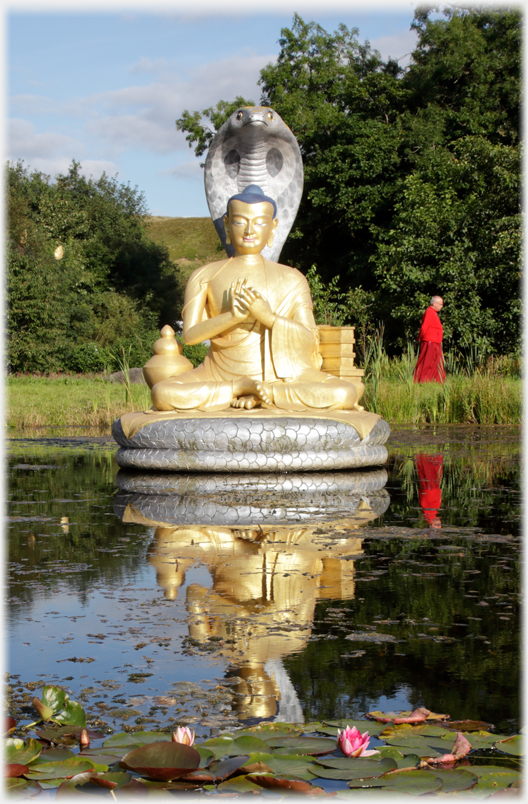
The Cogito and Meditation
...I was persuaded that there was nothing in all the world, that there was no heaven, no earth, that there were no minds, nor any bodies: was I not then likewise persuaded that I did not exist? Not at all; of a surety I myself did exist since I persuaded myself of something.
René Descartes (1641)

Cogito ergo sum wrote Descartes in his quest for certainty. He was saying: whatever is the case, whatever happens to me, I cannot be wrong about the experiences I have; and so, at the very least, of those experiences I must be certain. While exquisite, his thought seems to lead to too little. Philosophically his ideas take us elsewhere, but they also remind us of a very different tradition:
Buddhist meditation.
 Recent research has suggested that Hume may have been in contact with Buddhist ideas.
Sitting, there is no future, although speculations may haunt us; and the past may nip at our
heels,
Recent research has suggested that Hume may have been in contact with Buddhist ideas.
Sitting, there is no future, although speculations may haunt us; and the past may nip at our
heels,
 A page on the way that memories and plans distract us from the present.
however, we know the fallibility of memory. Meditation seeks to entertain only the
present.
A page on the way that memories and plans distract us from the present.
however, we know the fallibility of memory. Meditation seeks to entertain only the
present.
 On the importance of attention to many parts of life, not least meditation.
So sitting, can the experience be doubted? Of course what it is an experience of, is profoundly elusive. Descartes conducts an intellectual exercise; Buddhists wish to give primacy to experience. Are these parallel insights to different ideas, or the same idea in different guises?
On the importance of attention to many parts of life, not least meditation.
So sitting, can the experience be doubted? Of course what it is an experience of, is profoundly elusive. Descartes conducts an intellectual exercise; Buddhists wish to give primacy to experience. Are these parallel insights to different ideas, or the same idea in different guises?
The famous phrase, "Cogito ergo sum", has a slightly convoluted origin. That idea of Descartes first appeared in French as “je pense, donc je suis” in 1637 in his Discourse on Method. It was only later that it was translated into Latin. Whereas the actual argument that is most accessible, and is shown in the quote above (but does not contain the phrase "Cogito ergo sum") was first published in Latin in 1641 only later in 1647 being translated into French. The quote is from Meditation II, page 150 of the Haldane and Ross English translation entitled The Philosophical Works of Descartes Vol I, published by Cambridge University Press in 1911.
The Nagarjuna Monument, sitting in its pool of water lilies, is next to the Victory Stupa at the Samye Ling Buddhist centre in Eskdalemuir, Scotland. Nagarjuna, an Indian Buddhist philosopher of the second century CE, was concerned with an eastern version of Descartes Meditations; how to think about the gap between what seems to be the case and what (ultimately) is the case.
Above, hovering on blue introduces a link: click to go, move away to stay.

Saturday 22nd July 2023
 ...guide to this site
...guide to this site